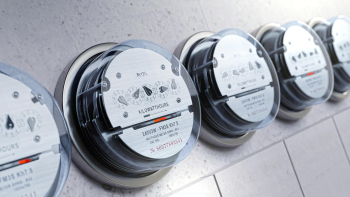

By Maggie Molina | Fri, June 27, 25
Electricity prices are going up across the country, but the impacts are perhaps most noticeable in the Northeast region. Over the last few years, electricity prices have been ticking up at a faster pace than inflation according to the U.S. Energy Information Administration (EIA). But average prices in New England and the Mid-Atlantic have risen the most: prices in both regions are up 19 percent since 2022 and could increase more than the national average through 2026. Gas prices are also forecasted to climb into 2026.
Some of the drivers for higher prices include the cost of gas delivered to power generators in New England, growing demand that requires more transmission and distribution upgrades, and deferred maintenance of the grid. PJM capacity costs are rising and the recent heat wave has caused prices to surge. In the Northeast, we also face unique uncertainties like potential electricity price hikes from reciprocal Canadian tariffs.
With all this talk about energy rates, those working in energy efficiency are often reminded of the mantra: consumers pay bills, not rates. When we focus too much on prices alone, we miss the conversation and opportunity to lower energy usage with energy efficiency, which reduces bills. That same opportunity holds true today. As concerns about energy affordability rise, we must again turn to energy efficiency.
Recently, we discussed opportunities and challenges for energy efficiency and affordability at NEEP’s annual Summit in Boston and at a session of the New England Conference of Public Utilities Commissions (NECPUC). I will unpack some of the themes of these conversations, and the critical importance of doubling down on energy efficiency amidst rising concerns about energy affordability.
Energy Efficiency is a Low-Cost Resource to All in our Regional Electricity Systems
The cheapest kilowatt-hour is the one never used. Energy efficiency is a low-cost resource for our regional energy systems and all customers on those systems, not just direct participants in efficiency programs. Why? Efficiency reduces our reliance on energy supply because it lowers electricity demand, which reduces supply needs. This offers some protection against volatility in energy prices for all customers.
But energy supply is only one component of electricity prices. Distribution costs are a growing share of prices. Efficiency can defer or avoid some distribution costs because targeted efficiency investments lessen the need for expensive grid investments. There is a growing opportunity for demand-side resources targeted at distribution needs.
Utilities can also work with customers to respond to surges in demand. Customer energy efficiency and demand response provide critical resources during times of extreme temperatures, for example. Demand flexibility offers vast untapped potential, as we explored in a Summit plenary panel on load growth. For example, New York state’s demand flexibility study by the Brattle Group finds potential of around 25 percent of the 2040 net system peak demand.
Efficiency Charges on Bills Avoid More Costly Options
At NECPUC, I spoke on a panel about the drivers of rising electricity prices. The panelists broke down the components of customer electricity bills to find the drivers of rising energy costs. I dispelled the myth that energy efficiency budgets were a driver of recent price increases. First, spending on ratepayer funded energy efficiency programs has generally been flat over the past decade (after a period of increases in the prior decade) and does not correlate with recent price increases. Second, even in states that have been increasing efficiency budgets, all programs must pass strict cost-effectiveness testing. By law, the programs must be cheaper than the alternatives of new supply and distribution. The efficiency charges, by design, offset higher cost alternatives.
Nonetheless, efficiency program spending is generally recovered on a volumetric basis and when a customer’s usage soars due to weather, the charges for efficiency also increase. While these charges can be reconciled, some policymakers are concerned about seasonal spikes. Some states like Massachusetts are considering new approaches for recovering efficiency costs, potentially shifting from expensing costs on an annual basis to securitizing some costs over a longer period. We heard about this, and other potential cost-saving provisions, proposed in the Commonwealth’s Energy Affordability, Independence, and Innovation Act at the Summit.
Efficiency is an Underutilized Strategy for Customers with the Highest Energy Bills
Nationally, about one in every four households have recently faced energy insecurity according to US EIA data for 2020. These households report difficulty paying energy bills or have kept their homes at an unsafe temperature because of cost concerns. The New England and Mid-Atlantic regions have the highest low-income energy burdens in the country (10.5 percent and 9.4 percent, respectively), according to ACEEE as measured by median low-income household values. And of the top 10 metro regions, where one in every four low-income households face energy burdens of about 16-22 percent, half are in the Northeast and Mid-Atlantic regions.
Bill assistance is a critical strategy to help customers with high energy burdens but faces limited budgets and new risks. For example, the federal Low Income Home Energy Assistance Program (LIHEAP) is at risk; funded through Department of Health and Human Services, reporting has shown its staff have been terminated. This critical program is necessary and requires support.
But bill assistance is not sufficient. We also need targeted energy efficiency investments for households with high energy burdens to provide durable reductions in energy usage. The region has made progress toward this objective by setting aside a growing portion of efficiency budgets for low-to-moderate income (LMI) households. But we must do more to target investments for those who need it most and have the greatest potential for savings. And advanced metering infrastructure (AMI) makes this easier.
At the Summit, one session discussed how this approach can be used for program design. For example, a ‘pay-for-performance’ program in California leverages data to identify customers with the greatest potential for savings. The program stacks incentives to create a more seamless interaction for contractors and customers. Focusing on customers with the greatest potential for savings provided electricity savings at times when it was the most expensive and posed the highest risk to the grid. The session also discussed Recurve’s FLEX Platform, which uses AMI data to examine customer heating and cooling loads and identify electrification solutions that are targeted and will not create additional strain on the grid. This tool was recently used in California to develop a data-driven approach to electrification planning.
Why Equity-Based Efficiency Programs are a Resource to All and Critical for Public Health
Programs targeting LMI households promote public policy goals for equitable outcomes and are cost-effective strategies for energy planners. Customer arrearage costs are recovered by all ratepayers, meaning that when energy efficiency investments reduce customer arrearages, they benefit all customers.
Engaging customers has been one barrier for low-income efficiency programs. Past NEEP research has shown that targeted engagement can increase enrollment. For example, Oracle’s predictive analytics tool has been used to send affordability alerts that resulted in 3x enrollment in discount rate and appliance programs, 6x enrollment in the utility's arrearage management program, and 4x enrollment in LIHEAP.
Moreover, electricity is a life-safety concern for both heating and cooling seasons. Dr. Diana Hernandez frames energy as a human right, as she examines in her new book Powerless: The People’s Struggle for Energy. This shift in mindsets and policymaking can help the region as we examine customer rate design options that optimize outcomes for energy efficiency, affordability, and electrification for all.
And during extreme weather like the recent heat wave, unfortunately too many households do not have access to cooling or cannot afford to run their inefficient air conditioners. Extreme heat is a major public health concern for the region, which has been more accustomed to managing extreme cold in winters than extreme heat in summers. Officials can leverage efficiency and electrification programs to promote high-efficiency heat pumps, which provide life-saving cooling in the summer.
Electrification is a Distinct Type of Efficiency Program and Warrants Unique Planning
Our closing plenary at the Summit focused on affordability, including the growing concerns about energy costs and how the region can find the resources to meet ambitious efficiency and electrification goals. Panelists emphasized the importance of investing in both traditional energy efficiency and electrification to meet our energy, affordability, and climate goals. Yet, we need to treat them as distinct but integrated approaches.
Moving forward, we will need to find complementary ways to pay for electrification so that electric ratepayers do not bear the brunt of the costs. For example, we can leverage financing strategies including on-bill financing and on-bill repayment. The proposed Energy Affordability, Independence, and Innovation Act in Massachusetts would expand on-bill repayment options while incorporating important consumer protections.
Cap-and-invest programs are another potential funding source, as are avoided gas service line extension costs. Cap-and-invest uses market forces to price pollutants and encourage innovation to identify solutions for reducing pollution. NEEP and partners explore a comprehensive set of policies and funding sources in Decarbonizing Buildings: How States can Set the Table for Success.
We must also find ways to optimize efficient, electric equipment cost-effectively. This includes harnessing market transformation approaches such as midstream strategies working with distributors and contractors. This also means that heat pumps should be prioritized for homes with high winter costs (e.g. electric resistance, oil, propane, and wood).
Moving Forward
Customers in the New England and Mid-Atlantic regions face some of the highest energy prices in the nation, and those prices are expected to increase in 2026. In this era of rising prices and load growth, energy efficiency is a critical resource to help customers lower costs.
Now is the time to move at full speed on energy efficiency across the region. We are entering a new era of exciting opportunities for integrated programs, sophisticated solutions, and new regional partnerships. New strategies that leverage data from AMI can optimize efficiency and electrification programs when and where we need these resources most, and to help target customers with high energy burdens.
The solutions are here, now is the time to harness them. Together, the region can tackle our energy affordability challenges if we double down on energy efficiency.



